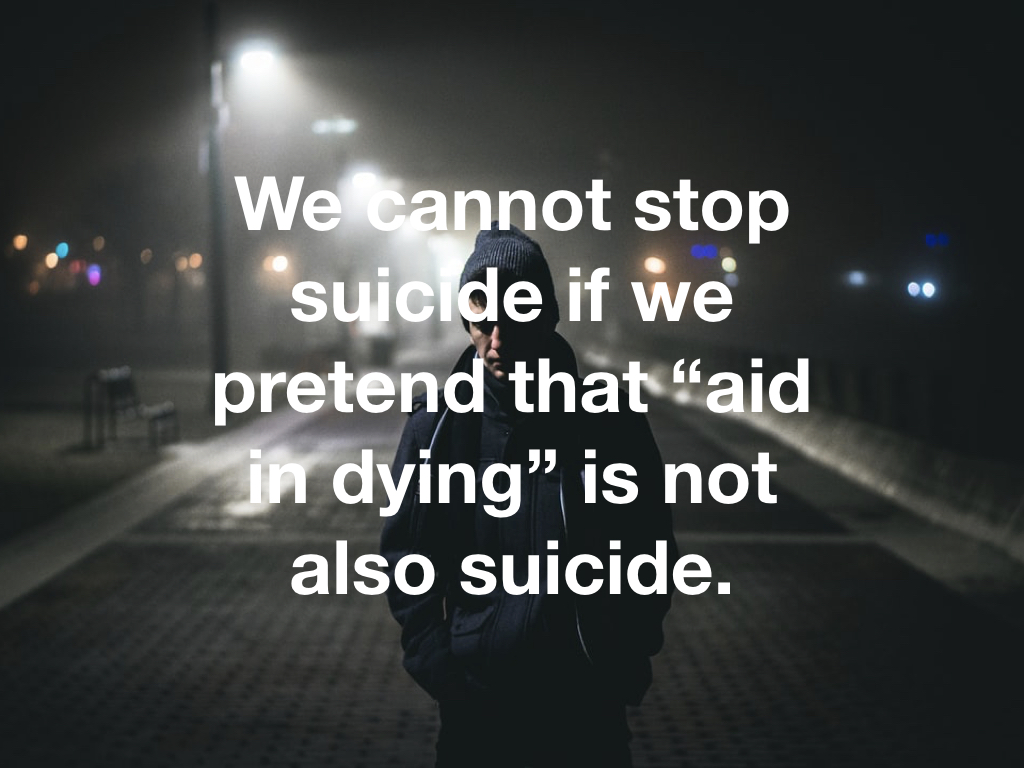
Suicide and the Culture of Death
by Christopher Dodson
Executive Director
North Dakota Catholic Conference
December 2019
The numbers should trouble us. The suicide rate in North Dakota is higher than the national average. Between 1996 and 2016 the rate increased 58%, higher than any other state. Even accounting for our demographics, the rate of suicide in North Dakota for white middle-aged men and Native Americans is higher than the national average. Suicide is also a significant problem with youth, veterans, and those dealing with same-sex attractions or gender dysphoria.
No one, however, is immune. Behavioral health and emotional issues that can strike anyone, Catholics included.
For that reason, we need to treat suicide as a preventable public health issue. The more we know and talk about suicide, the more it becomes clear that we can tackle the problem with evidence-based strategies. We must also have the will to invest the necessary resources.
For example, research shows that most people who attempt suicide but survive will never again attempt to take their life. We also know that suicide is usually an impulsive act and the impulse will dissipate within five minutes, on average. Removing easy means of harming oneself during those five minutes and developing strategies to prevent quick acts will help prevent suicides.
The State of North Dakota has a suicide prevention plan to address the problem as a public health issue. Part of that plan addresses removing the stigma associated with talking about mental health issues. Recently, Forum Communications dedicated a series of stories on suicide with an emphasis on doing just that.
Missing in the discussion, however, is that at the same time society is putting greater focus on preventing most suicides it is increasingly accepting of doctor-assisted suicide.
Proponents of assisted suicide have cleverly recast assisted suicide as “aid in dying,” but the rebranding is nothing more than an attempt to masquerade the true nature of the act, which is and will always be, assisted suicide.
One the strangest developments in contemporary society is a combination of legal positivism and self-defined reality. Legal positivism is the idea that whether something is right or wrong depends on what the law says. According to this thinking, if the government legalizes a particular act, that act is not only legal, but also moral. By “self-defined reality,” I mean the view of self-autonomy that believes the ultimate arbiter of whether something is right or wrong is the individual.
With assisted suicide, as we have seen with abortion, we have a partnership of the two ideas whereby if the state says it is allowed under certain circumstances, it is up to the affected individual to decide their own reality. Thus, killing an unborn child is a crime in most states, including North Dakota, but if a woman voluntarily seeks the assistance of a licensed physician to kill her child by abortion, it is legal. The contradiction should be obvious. The only reason to criminalize unborn homicide when it is not abortion is because the child is a human being. Yet, advocates of abortion justify killing an unborn child by abortion by claiming that it is solely up to the mother to decide whether the child is human. Stranger than the absurd idea that a person’s opinion can trump objective science is the idea that the state can give the right to dehumanize in one instance but insist on the existence of a human in another.
The assisted suicide advocates are taking a page from pro-abortion handbook. Most promoters of assisted suicide for the terminally ill claim they oppose suicide for everyone else. Suicide by youth, persons with mental illness, veterans, and Native Americans — all groups with high rates of suicide — they would argue are not only tragedies, but should be targeted by the state for prevention. They are right. They seek, however, a carve-out for a particular group of individuals and they have been successful in several states and the District of Columbia.
Their purported claim for the carve-out is the “fact” that the individual is dying. Dying, however, does not change the nature of the act. Nor can it justify the state abandoning this set of persons from the task of preventing suicide. A person near death is still a human being and deserves care, not abandonment.
Ironically, a few days before the Forum published its stories on suicide, one its columnists praised efforts in Minnesota to legalize assisted suicide. People like him want us to believe that some people are “different” from everyone else. This is how the Culture of Death wins.
What We Do
The North Dakota Catholic Conference acts on behalf of the Roman Catholic bishops of North Dakota to respond to public policy issues of concern to the Catholic Church and to educate Catholics and the general public about Catholic social doctrine.

Contact Us
North Dakota Catholic Conference
103 South Third Street, Suite 10
Bismarck, North Dakota
58501
1-888-419-1237
701-223-2519
Contact Us

